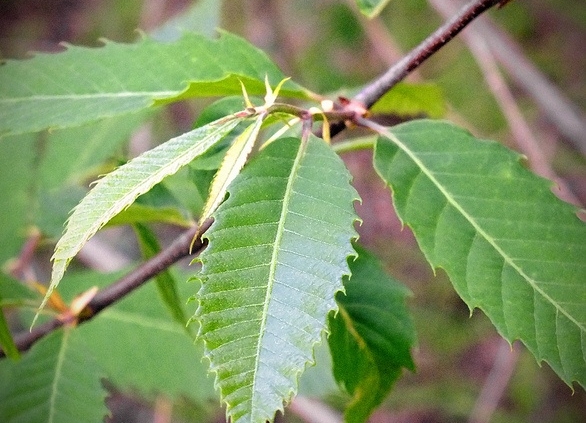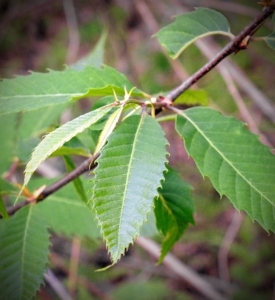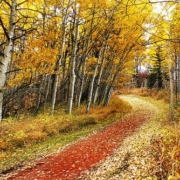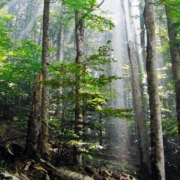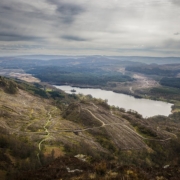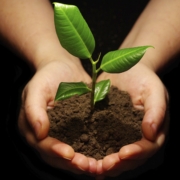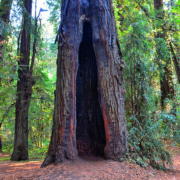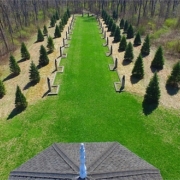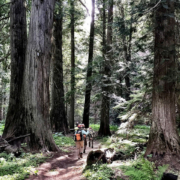5 Reforestation Projects in the United States
5 Reforestation Projects in the United States
If you ever doubted that the great forests of the U.S. are under attack, consider the following forces which are acting daily to diminish one of this nation’s greatest natural resources. Infestations of harmful wood-boring beetles literally kill off tens of thousands of acres of trees every year. Forest fires consume vast tracts of forested lands every year, and even though eventual re-growth occurs, that takes a long time. Changes to the climate, especially drought, are also putting forests under tremendous stress, making them more susceptible to the harmful impacts of pests and forest fires.
Fortunately, there are some projects underway to help counteract all these negative forces, so there is yet hope that trees will remain as guardians of earth, providing their benevolent influence. International forest certification programs like Sustainable Forestry Initiative (SFI) and Forest Stewardship Council (FSC) ensure that forests are sustainably managed, so that for every tree that is harvested, at least one new tree is planted in its place. Without them, there would be a great deal more harmful carbon dioxide in the atmosphere, much of our water supply would go unfiltered, and there wouldn’t be a reliable and consistent supply of lumber for future generations to come.
Even though all forests in North America have been certified for decades, we continue to see the effects of climate change, wood boring pests, forest fires, and poor forest management practices that occurred in the decades and centuries prior. These five projects supported by the Nature Conservancy are an effort to reverse those impacts.
Central Appalachians Project
Red spruce forests in this region were decimated by heavy logging and forest fires throughout the 19th and early 20th centuries. Some trees were re-planted, but the red spruce has not grown back as readily as other species have. The Nature Conservancy has partnered with other concerned organizations to help restore some of the great red spruce forests of West Virginia, Virginia, Tennessee, North Carolina, and Maryland. This program really got in full swing in the 1970’s and 1980’s, and is still going strong today.
Longleaf Pine Project
Vast forests of longleaf pine stretched across much of the southeastern U.S. 200 years ago, but that enormous stretch of pine has been virtually wiped away by poor logging methods, and conversion of the land for farming and industrial usage. A serious effort was begun more than a decade ago to reverse this regrettable policy, and today the tiny individual stands of longleaf pine are making a remarkable comeback in some areas, with roughly 4 million acres now enjoying protection from logging and other usage.
Mississippi Bottomland Hardwood Project
The biggest stretch of forested wetlands in America used to be found along the Mississippi bottomland, with cypress and other trees taking up 24 million acres of wetland, and providing home to a diverse collection of animals and other plants. After years of farming and clearing for home-building, only about 5 million acres of those wetlands remain. The Nature Conservancy has worked for the past 30 years to try to protect and restore these Mississippi bottomland areas, and progress is finally starting to gain traction.
Shortleaf Pine Project
Over the past 30 years, the formerly prolific shortleaf pine has seen huge tracts of forest eliminated because of pests and timber management policies. The Nature Conservancy has recently spearheaded a drive called the Shortleaf Pine Initiative to protect and better manage the remaining stands of shortleaf pine.
Urban Trees Project
Numerous metropolitan areas have joined forces with The Nature Conservancy and other organizations to promote a re-forestation of trees in urban settings. Chicago, Boston, New York City, Philadelphia, and Los Angeles are just a few of the huge cities which have recognized the value of planting as many trees as possible in their urban landscapes, to help improve the quality of life for all their citizenry.

